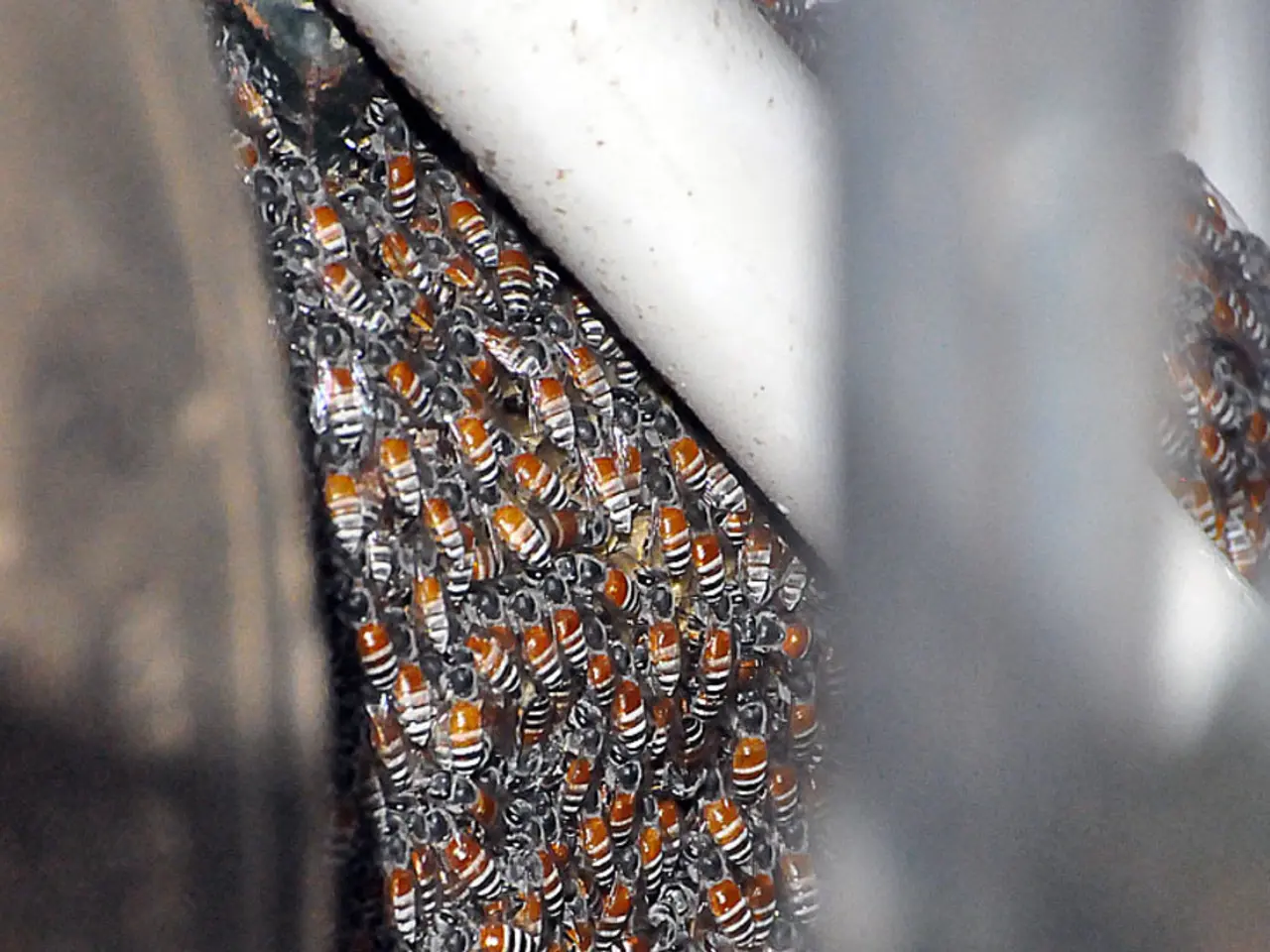Ancient bronze jars containing mysterious sticky substance solution conclusive identity, putting an end to 70-year controversy
In a groundbreaking discovery, researchers have identified the sticky substance found in 2,500-year-old bronze jars from southern Italy as honey. This ancient honey, discovered in an underground shrine, also known as a heroon, at Paestum, offers a fascinating glimpse into the religious and cultural practices of ancient Greek and Roman civilizations.
The honey, which was likely an offering to an ancient god, holds profound symbolic and religious significance. In Greek mythology, honey was considered a symbol of immortality and divine nourishment. For instance, infant Zeus was said to have been fed honey, linking it to the sustenance of the gods. Honey was also associated with important deities such as Zeus and Aphrodite, symbolizing divine favor, love, and fertility.
In Roman culture, honey and bees represented religious symbolism connected to wisdom and poetic inspiration. Honey was also a symbol of abundance and prosperity, valued for its sweetness and rarity, which rendered it a luxury item. Both civilizations used honey for sacred offerings, wedding blessings, and birth celebrations, emphasizing its role in life-affirming and fertility rites.
Archaeologists initially assumed that the jars contained honey as a symbol of immortality. However, the researchers' recent analysis revealed some unexpected findings. The ancient honey residue contains copper ions, which can kill microorganisms and potentially explain how the honey lasted thousands of years.
The study, led by Luciana da Costa Carvalho, published in the Journal of the American Chemical Society, also found that the ancient honey contained royal jelly, a secretion made by worker bees, and peptides unique to the European honeybee (Apis mellifera). Moreover, the researchers used mass spectrometry to identify intact hexose sugars in the ancient jar residue for the first time, providing valuable insights into the chemical composition of ancient honey.
Interestingly, the amount of sugar in the ancient honey residue is very low compared to modern honey. This could be due to the natural aging process or the specific techniques used by the ancient Greeks and Romans to preserve their honey. The honey residue tastes like washed honeycomb but slightly more acidic, according to the researchers.
The heroon at Paestum, where the jars were found, also includes a large, wooden table with wool-wrapped iron rods. These artifacts provide more insights into ancient rituals and shrines, offering a unique peek into the religious practices of the time. The offering may have been made to Is of Helice, the mythical founder of the ancient Greek city of Sybaris, which was originally named Paestum.
Honey and honeybees played significant roles in ancient Greek and Roman medicine, rituals, cosmetics, and food. The discovery of this ancient honey not only sheds light on the religious and cultural practices of these civilizations but also reinforces the belief that honey was indeed considered a superfood by the ancient Greeks.
As analytical techniques continue to develop, researchers will undoubtedly reanalyze more artifacts from museum collections, uncovering even more secrets from our past. The study of ancient honey, such as this discovery in Paestum, offers a captivating window into the lives, beliefs, and practices of our ancestors, providing us with a deeper understanding of our shared human history.
The study of the ancient honey residue in the bronze jars from Paestum underscores its significance in both Greek and Roman lifestyles, linking it to health-and-wellness as a popular food-and-drink item and symbol of divine favor in the form of nutrition. The chemical analysis of the honey reveals its unique nutritional value, including the presence of royal jelly and peptides, further reinforcing its importance in the science of honeybees and nutrition.
Given the ancient honey's role as a sacred offering, a symbol of immortality, and a luxury item in both civilizations, it is plausible that health-and-wellness practices involving honey-based remedies and lifestyle choices were prevalent in the diet and wellness routines of ancient Greeks and Romans, emphasizing the broader implications of this discovery for understanding the history of health-and-wellness and nutrition.




